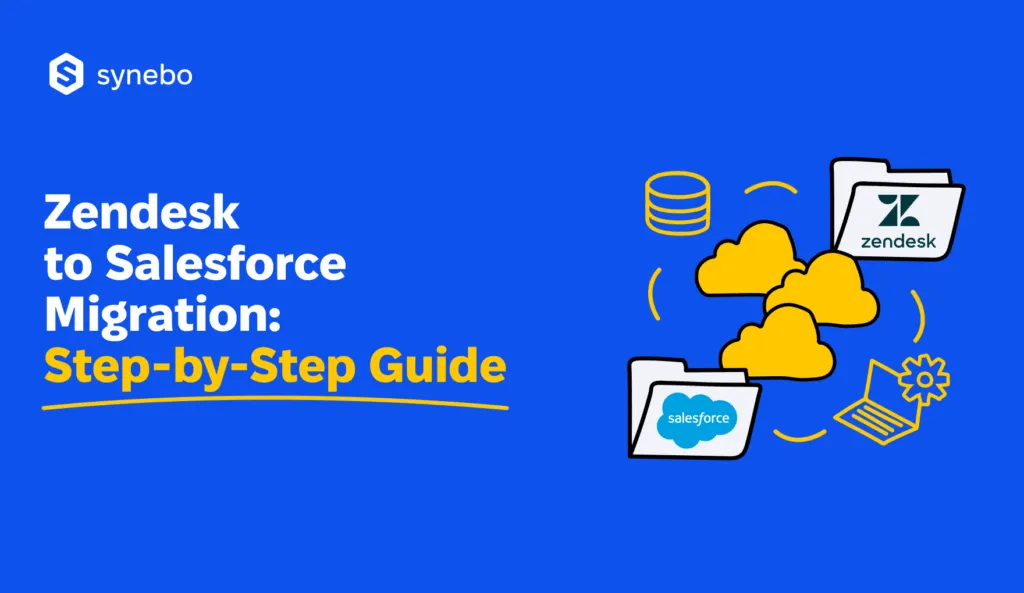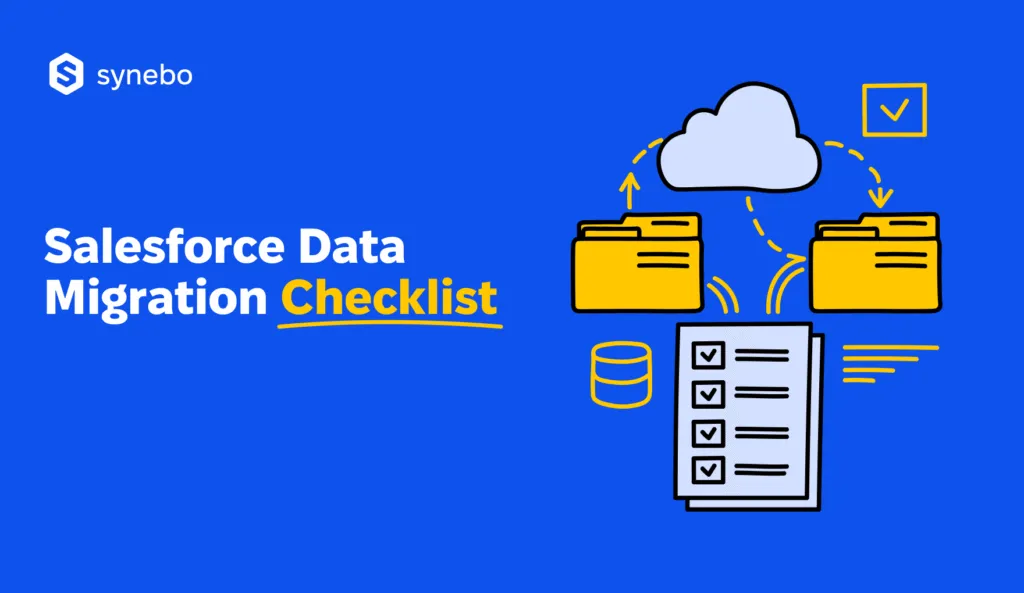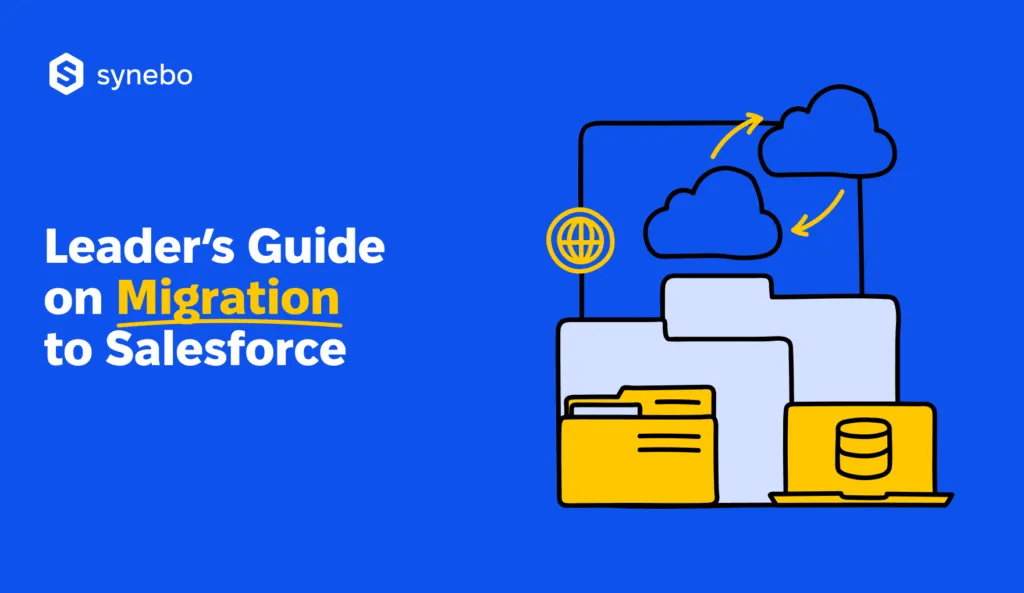Migrate Data to Salesforce Safely – Build Foundation for Scale
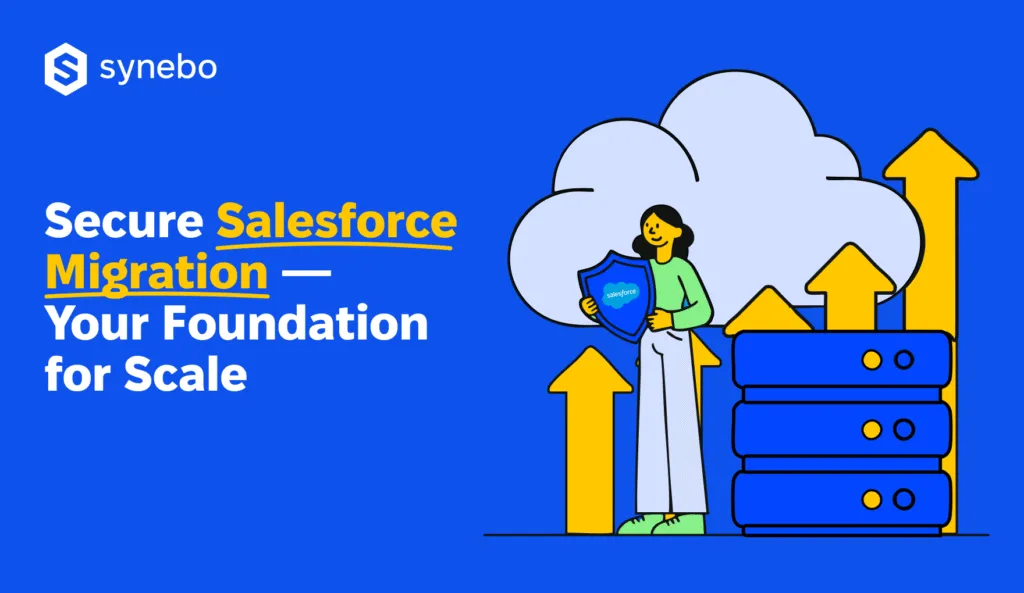
A migration can either protect your business and give an impulse for growth – or expose it. The way you migrate to Salesforce can determine if your progress is stable or shaky. A rushed approach lets errors happen and puts sensitive details in the system at risk. Eventually, rush can undermine trust in SF.
But a secure Salesforce migration, handled with care, acts in the opposite way. It builds a good foundation where reports, forecasts, and customer interactions rely on trustworthy data. You may probably know (or guess) that the info in your CRM (legacy or Salesforce) is the basis for your reputation, compliance, and confidence of your customers in your company.
SF always promises scaling opportunities. Yet, your growth begins with safeguarding accuracy and respecting the sensitivity of the information you move. Because – again – handled properly, Salesforce data migration becomes your defense for compliance, a shield against top security threats, and a launchpad for sustainable growth.
In this article, we’ll answer the question, “How does Salesforce ensure data security and compliance?”, study the Salesforce data security best practices you can apply in your project, and discuss why a secure Salesforce migration is the smartest step toward scaling.
Why Scaling Becomes Easier Once You’re on Salesforce
At first glance, everything appears simple. When migrating to Salesforce, you get centralized records – and after using outdated systems, this alone is already a major optimization. But that’s only at first – surface-level – view, as SF gives you much more.
After migration to Salesforce, companies report they got clear, quantifiable business outcomes:
- Аn average ROI of 314% – Proving that they generate over 3 dollars for every dollar they invested. Moreover, in cases of active SF adoption, this metric rises dramatically – up to 789%.
- Efficiency boost – Productivity also climbs significantly – companies share – which frees their teams to focus on growth strategies and seriously minimize processes they did manually.
These numbers and much other statistical evidence you can see in open sources online say that a successful Salesforce migration becomes an engine for unwavering growth. Our vast experience proves it, too: when your data fuels one platform – Salesforce – your forecasting sharpens, pipelines shorten, and customer engagement gets easier.
For your executives, this means confidence in their decisions. For your IT crew – fewer silos and stronger governance. For your, say, CFOs, it brings efficiency that directly reflects on your balance sheets.
Secure Salesforce Migration as the Cornerstone of Trust
So, why does safe data migration in Salesforce matter? In essence, the title of this section nails the point in a concise and straight-to-the-mark way.
Because it’s a basis for trust.
Now, let’s break it down in more detail – why the stakes are high for decision-makers in any business:
- Regulatory exposure – GDPR, НІРРА, SОХ, PCI DSS, and other standards demand flawless handling of sensitive/confidential info. Falling short here leads to significant penalties (those can often climb into millions).
- Vulnerabilities in security – They are more than real. And the most “popular” threats involve misconfigurations, integration issues, insider misuse, and – surely – breaches. Each threat creates weak points where critical records can be lost or exposed.
- Business consequences – Unsafe data migration to Salesforce leaves scars. Beyond fines, you can face damaged credibility, spoiled customer confidence, and huge reputational harm that will linger for years.
Secure data Salesforce migration, therefore, is a safeguard of trust and an insurance policy for growth. It gives your business a lot: IT leaders maintain compliance. Executives protect brand equity. Administrators gain peace of mind – the foundation is solid.
In short, when you treat Salesforce migration as a security-first initiative, you scale securely, too.
Building a Strategy that Balances Salesforce Security & Scale
We’d say that a safe move strategy sets the tone for everything that follows in SF. It ensures your data travels safely. It helps your team stay confident. It makes your foundation for firm growth.
Read Also: Salesforce Data Migration Checklist: What to Prepare Before You Start
So, how to migrate data to Salesforce so that the process protects both your compliance and reputation?

Preparation and Planning
This stage exceptionally matters.
The steps that should never be ignored are:
- Create a clear inventory of all your records
- Decide which data deserves preservation, which should be archived, and which has no future value
- Clean datasets before movement – it prevents errors from spreading
- Map relationships between objects
Plus, we advise that you outline a phased timeline with milestones – to know the process duration. It’s a proven approach among Salesforce data migration best practices.
Security Measures
Safeguards must be woven, stitched, and fused into your every step. This is also an example of the best practices for data migration in Salesforce that ensures compliance and trust.
So, apply:
- End-to-end encryption – it protects data during transit
- Permissions based on roles – this strictly limits access to what each user needs
- Masked fields (if/when sensitive values require additional confidentiality)
- Data backups; combine those with a rollback plan to quickly recover if issues surface
Key People
As seasoned tech specialists ourselves, we know that a secure Salesforce migration cannot rely on technology alone.
Your success requires involvement of all your organization – all key people:
- Your C-level executives rally around shared business outcomes
- Your IT & Compliance crews also need to define their responsibilities for system security, data integrity, and regulatory adherence
- Your key business units (sales, marketing, finance, etc) give context for data value
- Your end users have to receive training and get all their questions answered
Beyond the critical role of Salesforce data security and key people involvement, we can add one more essential thing: with regular communication with your employees, alignment clicks, engagement sparks, and adoption accelerate.
Risk Management
Every migration carries vulnerabilities – these aren’t uncommon occurrences during such transitions.
Handle them early:
- Identify risks before execution – map tech, operational, and compliance bottlenecks to address proactively
- We’ve mentioned it, but still: migrate data to Salesforce in phases to minimize exposure
- Continuously monitor integrations and your user activities to strengthen oversight
Integration Hurdles
Salesforce environments almost always interact with others.
When migrating, you have to be absolutely careful with integrations:
- Assess APIs, third-party apps, and external systems
- Check security configs and connectivity
- Test compatibility (even) after secure Salesforce migration – before full adoption
Overall, conquer integration hurdles, and your SF adoption will flow seamlessly and in perfect harmony with every system you are using.
Growth Planning
A secure Salesforce migration process must look beyond the immediate transfer. This is, in many ways, similar to rethinking all business processes in a company. And SF is very instrumental in this. Fundamental, we’d say.
Quick tips from us to scale with stability:
- Set up regular data checks – for correctness and relevance
- Configure dashboards and reporting that track the efficiency of new processes
- Establish and maintain a process (a ritual) of regular updates and optimization – it will let your infrastructure grow with your business
- Allow room for new integrations, apps, or modules – they will inevitably be needed at the next stages of your business development
- Monitor UX and rate of SF adoption – growth won’t happen without engaged people – we’ve touched it earlier
In short, Salesforce CRM migration isn’t the finish line. It’s a new impulse for the growth of your company.
For a secure SF transition, partner with Synebo. Our Salesforce data migration services ensure your data relocation protects compliance, maintains integrity of your data, and builds a solid starting point for your scaling.
After the Move: How to Keep Salesforce Driving Growth
Speaking about a new impulse in more detail, please note that what comes after determines if SF becomes your expansion platform or simply a new database.
If you treat the post-stage after your secure Salesforce migration with the same discipline, you get faster adoption of the new system by your employees, enjoy smoother going operations, and see lasting trust among leaders of your company.
- Prove Your System’s Strength. Relocation of your data is over? Make performance checks – you need to confirm your system speed and stability. Validate that your data integrity has been preserved and the UX remains OK. This step confirms your SF foundation is stable; it’s important before scaling further.
- Lock In Lessons Learned. Document those challenges you encountered. Put down the practices you used to solve them. These all shorten the preparation cycle for your future scale-ups. These also help reinforce strategies like Salesforce data loss prevention – you’ll avoid resurfacing the same mistakes.
- Spark Usage & Build Comfort. When processes shift, рeople usually need reassurance. So, organize skill-up training, share knowledge, and be open to communication – your users must feel confident inside SF. People embrace the change when they see/feel the new CRM helps them.
- Share Results & Impact. SF brings positive results. So, highlight them as early as you can. It can be clearer reporting, faster deal cycles, and/or enhanced data security in Salesforce. Whatever the achievement, showcase it to your key people. When you link migration with ROI, your executives eagerly support this investment.
- Evolve – and Don’t Stop. Implement regular data quality checks – they ensure your data is integral. Conduct scalability reviews – they help you be sure your infrastructure supports your growth. Perform security and Salesforce data loss prevention audits – they maintain your compliance and reduce risks.
Read Also: Preserving Salesforce Data Integrity: 10 Steps to Success
Our experience proves that when companies approach post-migration responsibly, their Salesforce migration evolves into a continuous story of growth.
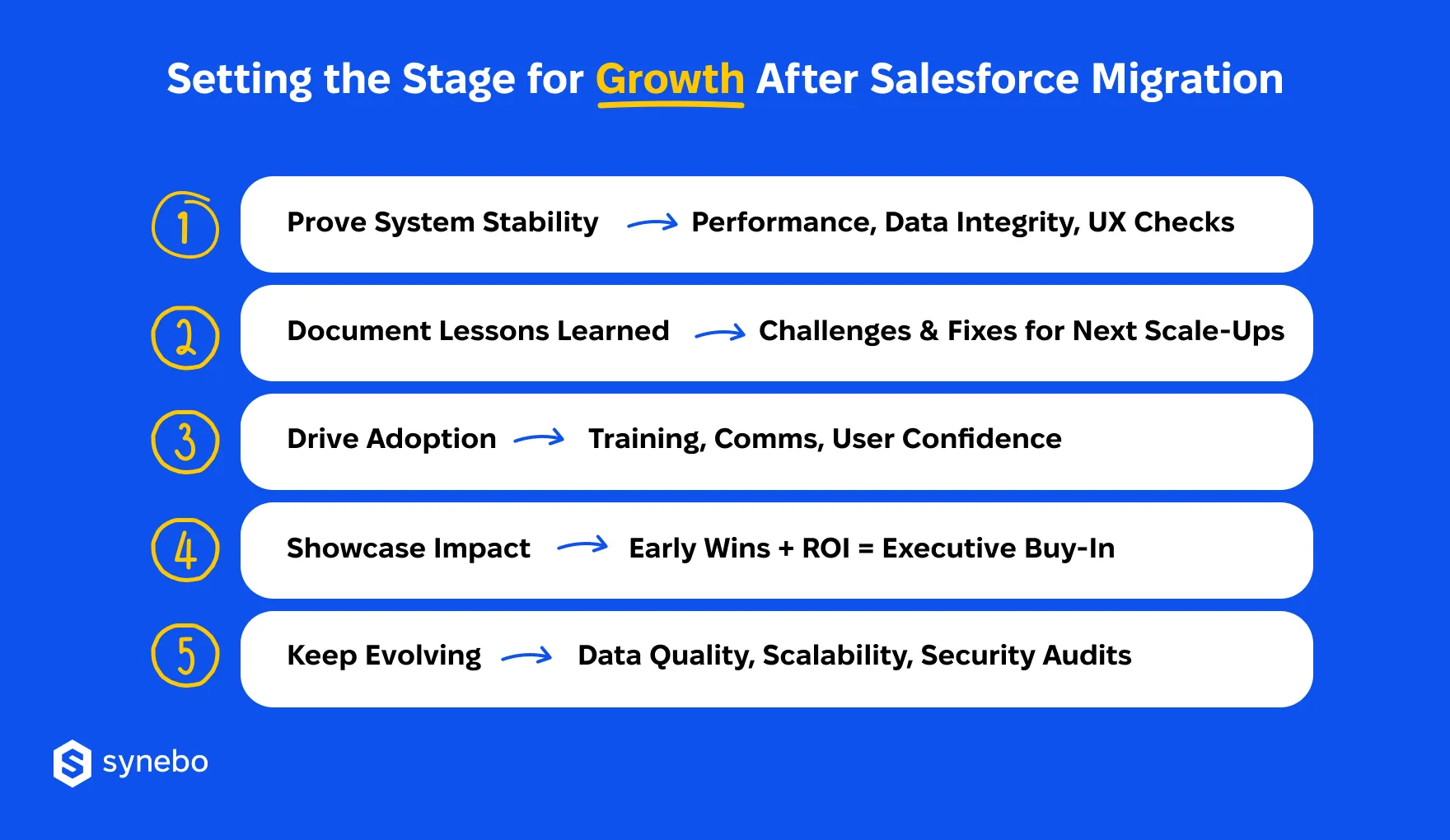
Crucial 90 Days After Salesforce CRM Migration
Earlier, we emphasized why the post-migration phase matters. At the same time, the real test starts when your people log in and use SF daily.
Your next three months set the stage for your future success. Why? Because all your crews expect stability, your managers look for results, and your leaders monitor if the system overall pays off.
And the system must prove it all.
So, the critical points for you to address first are:
- Stabilization. Keeping Salesforce data security solutions in mind, сontinue monitoring data accuracy and your system responsiveness. If you ignore issues at this phase, they can ripple through processes and will impact your performance (and adoption) very soon.
- Everyday usage. You’ve already guided your users. Now, encourage feedback from them – do they have any problems with the system? You can see if SF remains underused or becomes a trusted tool for your company in the first weeks.
- Integration checks. Connections with other systems – finance, marketing, support, etc. – also need careful monitoring. Keeping your eye on them prevents their silent failures.
- Protection assessment. Inspect user permissions, system logs, and compliance frameworks, and stay alert to top Salesforce data security threats.
If you focus on these actions, you’ll lay a really good foundation for the future growth of your company. And your Salesforce setup will evolve from a tool into a strategic asset.
For a hassle-free shift and confident adoption, work with Synebo. As your Salesforce data migration partner, we help ensure your move to SF is secure, your processes stay intact, and your team gets the most out of this powerful system.
Proving Success: Salesforce Migration Metrics
Our clients always emphasize that, eventually, numbers speak louder than promises or intentions. Your C-level executives, whatever their domain and function, need evidence from different angles. And together these signals tell a story.
So, what КРІs hold weight?
- Data integrity. What’s important: you see minimum errors. No duplication in your data, and accurate record mapping. These all show: your secure Salesforce migration was safe.
- System performance. What’s crucial here: your system responds faster – with a steady uptime.
- Your users actively use the new system. If it’s so, adoption goes OK. Your people are embracing workflows and providing their feedback. Good.
- Process efficiency. You must see you’re making fewer manual steps, reporting got easier and quicker, and your cross-department collaboration definitely got smoother.
- Compliance assurance. Audit trails and verified access controls, plus strong Salesforce security measures, reassure your regulators and your company’s leaders. If it’s so, your SF is secure and working well.
We advise that you track these indicators consistently. At the beginning, they confirm your safe migration. But later, they also prove SF is ready to scale together with your goals.
Build Your Confidence for the Road Ahead
A Salesforce migration is not a checkbox activity. When your move is safe, structured, and secure, you gain confidence that your data works for you.
The real measure of success lies in trust: trust from your executives that compliance holds, trust from your managers that reporting is reliable, trust from your employees that the CRM system supports their daily job.
To achieve that, our clients say they required careful planning, good execution, plus ongoing guidance from a skillful Salesforce data migration service provider. In this case, their migration pays perfect dividends.
If you want your Salesforce to scale without issues, connect with Synebo. We help organizations with secure Salesforce migration and build a basis for their growth. Your move to SF deserves more than safety – it deserves strategy, confidence, and outcomes you are more than satisfied with.
Data readiness means accuracy and consistency. Before migration, remove duplicates, resolve conflicting fields, and standardize formats – check our data preparation tips. A well-prepared dataset is reliable and predictable. It gives Salesforce a strong start. If records are clean and validation rules pass with no problem, your info is ready to relocate.
Your Salesforce data security begins with controlled access. That is why, limit the people/roles who handle sensitive files. Use encrypted channels for transfer, and apply audit logging. Test permissions immediately after loading records to confirm they mirror your policy. Careful handling at each stage prevents leaks and reassures your executives that compliance and data protection stand firm while the process is going.
At times, no. Because too much legacy info can complicate your workflows and – hence – slow adoption. When migrating to Salesforce, we advise that you give priority to recent, relevant, and actionable records. As for older datasets, you may archive them externally. This approach gives you clarity and doesn’t overwhelm the platform. SF is a live environment. Here, only meaningful data shapes your decisions.
Your scalability depends on architecture and governance. To make sure it’s ready for growth, monitor your system performance. Also, test your integrations – do it under heavier loads. Review field structures for unnecessary complexity. Consistent audits of storage usage and sharing rules also help. If the platform works OK with more users/processes/data layers added, your scalability is proven.


